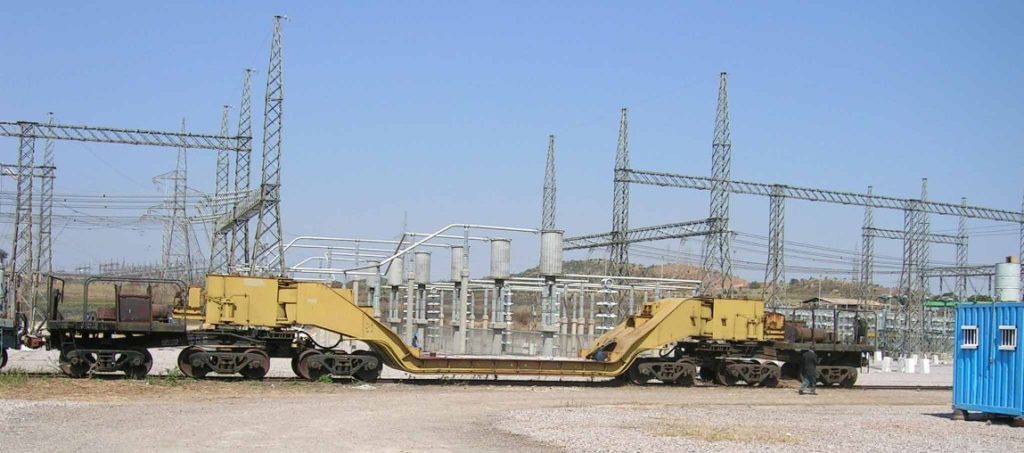The southern region comprising Karnataka, Tamil Nadu, Andhra Pradesh, Telangana and Kerala account for most of the power transmission infrastructure currently under construction, according to government statistics.
As per “Tarang”, the Union power ministry’s official website for power transmission, India is in the midst of constructing 57,261 ckm of transmission lines along with 287,438 MVA of transformation capacity.
Out of this, the Southern region accounts for 38.4 per cent in terms of transmission lines and 36.2 per cent in terms of substation capacity. This is also reflected in the fact that a number of renewable energy based projects are being planned in south India, particularly Tamil Nadu, requiring huge transmission infrastructure to enable feed-in into the National Grid.
| Transmission Infrastructure Under Construction | |||||
| Actual Values | % share | ||||
| Lines (ckm) |
Substations (MVA) |
Lines (ckm) |
Substations (MVA) |
||
| By Region | |||||
| Western | 12,657 | 65,475 | 22.1 | 22.8 | |
| Northern | 10,365 | 77,245 | 18.1 | 26.9 | |
| Northeastern | 4,592 | 12,388 | 8.0 | 4.3 | |
| Eastern | 7,649 | 28,243 | 13.4 | 9.8 | |
| Southern | 21,998 | 104,087 | 38.4 | 36.2 | |
| Total | 57,261 | 287,438 | 100.0 | 100.0 | |
| By Type | |||||
| Interstate | 3,513 | 82,102 | 6.1 | 28.6 | |
| Intrastate | 53,748 | 205,336 | 93.9 | 71.4 | |
| Total | 57,261 | 287,438 | 100.0 | 100.0 | |
The Western region—comprising Maharashtra, Goa, Gujarat, Madhya Pradesh and Chhattisgarh—comes next in order. This region had a share of 22.1 per cent in terms of upcoming transmission lines and 22.8 per cent with respect to transformation capacity.
It is also interesting to note that nearly 94 per cent of the 57,261 ckm of lines under construction are intrastate lines, typically developed by state transmission utilities. However, in terms of transformation capacity under construction, intrastate projects account for a much lower share of 71 per cent.
Currently, 3,513 ckm of interstate lines together with 82,102 MVA of transformation capacity are under construction. These lines are typically awarded under the tariff-based competitive bidding route with Power Grid Corporation of India alongside private entities in the development fray. However, there are also projects that are directly assigned to PGCIL under what is called as the RTM (regulated tariff mechanism) route. Currently, most of the 3,513 ckm of interstate lines under construction are being developed under the RTM philosophy. However, the exact breakup in terms of length is not readily available.
Performance in April 2020
Despite the nationwide lockdown in April 2020, India could add 509 ckm of transmission lines during the month. This even exceeded the 298 ckm planned. Of the 509 ckm, nearly the entire length (508 ckm, to be precise) came up in south India—mainly Karnataka, as suggested by disaggregated data. Interstate lines had a minority share of 41 per cent in these 509 ckm of lines with intrastate lines accounting for the remaining 59 per cent.
In April 2020, the total transformation capacity added stood at 3,610 MVA. This, however, was only 87 per cent of what was planned (4165 MVA). Nearly 70 per cent of this transformation capacity was at the interstate level. Almost 97 per cent of this substation capacity (3,500 MVA) came up in North India with Northeastern India accounting for the remaining 110 MVA. There was no substation infrastructure added in the remaining three regions in April 2020.
FY20 sees 3 pc fall
In FY20, the total transmission lines added stood at 22,437 ckm. This was 2.9 per cent lower than the addition of 23,119 ckm in FY19. The performance in terms of transformation capacity was slightly worse. As against 86,193 MVA installed in FY19, addition in FY20 stood 15.6 per cent lower at 72,705 ckm. In fact, the transformation capacity added in FY19 was the highest in any year in the recent past. In terms of transmission lines, the best performance came in FY17 when 28,114 ckm of new infrastructure was installed.
(Featured photograph for illustration only)

